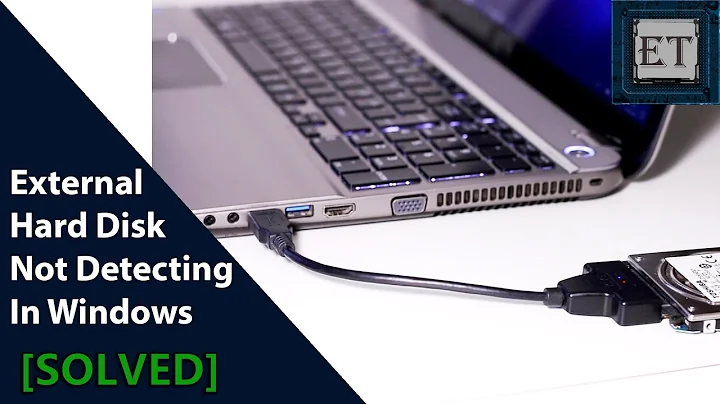Is there any way to ensure that a specific USB key always gets the same drive letter?
Solution 1
If you insert the USB key and then go to the Disk Management Console (right-click '(My) Computer' and select 'Manage' then 'Storage' in the left hand panel). You can then right-click a drive in the right hand panel and select 'Change Drive Letter and Paths...' where you can assign it a specific drive.
Then repeat the process for each USB key.
I'd keep the letters towards the end of the alphabet to avoid conflicts with other removable media.
I go from 'U' upwards...
Solution 2
There is a tool called USB Drive Letter Manager (USBDLM) with a whole bunch of features for USB drives such as stable drive letters depending on the device ID, hiding non-used card reader drive letters, starting scripts on connect (of certain devices), ... Really cool and stable solution for all the Windows USB deficiencies!
Solution 3
I'm pretty sure this is not possible out-of-the box (though I have seen some third party utilities that claim to massage Windows' behaviour to this effect).
What you can do though is use the disk manager (found in the tree of configuration options accessed via "manage" from the right-click menu on "my computer" in XP) set the volume to appear in a particular directory instead of, or as well as, under a drive letter. This does seem to stick. For instance, one of my USB drives always appears as c:\mnt\littlered, and the three partitions on an old hard-drive that I sometimes connect via a PATA->USB adaptor turn up as c:\mnt\oldsys_c, c:\mnt\oldsys_e and c:\mnt\oldsys_f.
If the drive letter is important (rather than the volume just being in the same place more generally) then you could try sharing the directory that you chose and map that share locally as a particular drive letter. I'm not tried this myself, but in theory it should work without issue.
Exactly how Windows identifies the drives I've not seen documented, so this may fall down if you have two completely identical mass storage devices, but it has worked for me so far.
Related videos on Youtube
Xavier Nodet
Updated on September 17, 2022Comments
-
 Xavier Nodet almost 2 years
Xavier Nodet almost 2 yearsDepending on what's currently connected to a PC, a USB key does not always get the same drive letter. This is an issue for me because I want to use this key as a backup destination, and I thus have to change the path that's used from time to time.
Is it possible to make sure that a specific key always ends up with the same letter?
-
 David Spillett almost 15 yearsThat does not tend to stick permanently though. While I've found that it does stick for a while there is no guarantee that Windows won't have assigned the letter elsewhere next time you plug the drive in and it will be forced to chose another drive. I've also seen drive letter assignments like this vanish when there hasn't been any external device plugged in between occasions when the specific drive has.
David Spillett almost 15 yearsThat does not tend to stick permanently though. While I've found that it does stick for a while there is no guarantee that Windows won't have assigned the letter elsewhere next time you plug the drive in and it will be forced to chose another drive. I've also seen drive letter assignments like this vanish when there hasn't been any external device plugged in between occasions when the specific drive has. -
Console almost 15 yearsIt is permanent, windows will always assign the specified letter to the specific usb key if that letter is available. It will also happily assign this letter to a different usb key, if the "owner" is not inserted. So in order to guarantee that a specific usb key always has the same drive letter, use the method described but assign it a letter far down in the alphabet. For example U, like pelms suggests.
-
 David Spillett almost 15 yearsI'm sure I've seen it not be permanent when I would expect it to be, but I can't rule out having done something else wrong myself... Using the map-volume-to-path-and-map-that-to-a-drive-letter-via-"network"-share is what I would try if the drive letter was important and positively had to remain the same (the share mapping would stop Windows giving the letter to another removable drive).
David Spillett almost 15 yearsI'm sure I've seen it not be permanent when I would expect it to be, but I can't rule out having done something else wrong myself... Using the map-volume-to-path-and-map-that-to-a-drive-letter-via-"network"-share is what I would try if the drive letter was important and positively had to remain the same (the share mapping would stop Windows giving the letter to another removable drive). -
Richard almost 15 yearsWindows uses the USB device's serial number. These should be unqiue, but there are manufacturers that don't include a serial number (so Windows always sees it as a new device unless in exactly the same port); I'm not aware of any cases of serial numbers included but that are not unique, I expected it does occur. It is the latter case that would cause problems with two devices both connected at the same time.

![How to Fix USB Files Not Showing But Space Used Issue? [5 Solutions]](https://i.ytimg.com/vi/Z3hTqHrIY-w/hq720.jpg?sqp=-oaymwEcCNAFEJQDSFXyq4qpAw4IARUAAIhCGAFwAcABBg==&rs=AOn4CLAaNU0MDbfbQ8xs61RaRkrsvWS0cQ)


